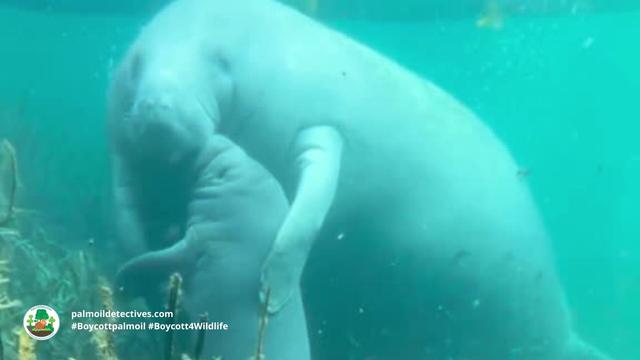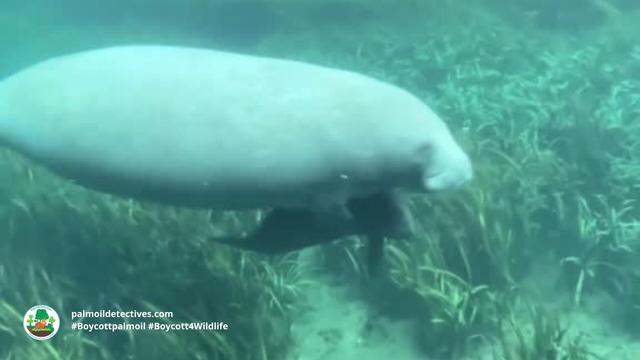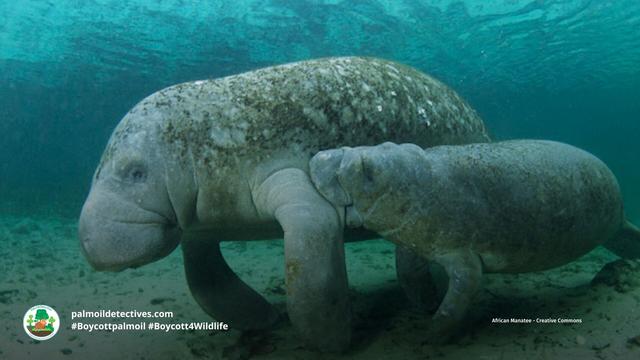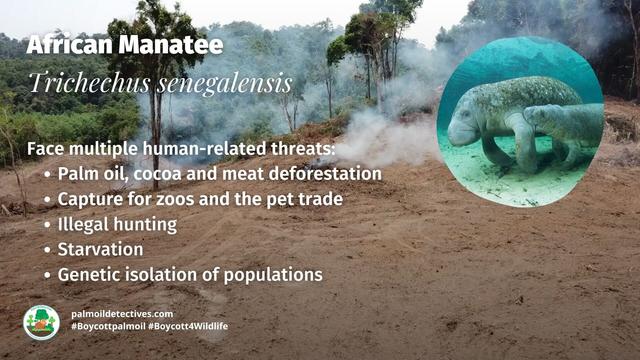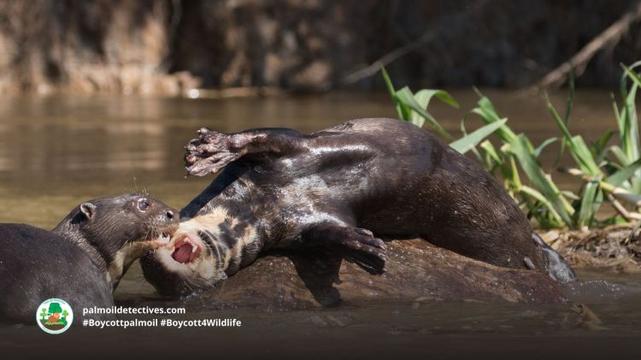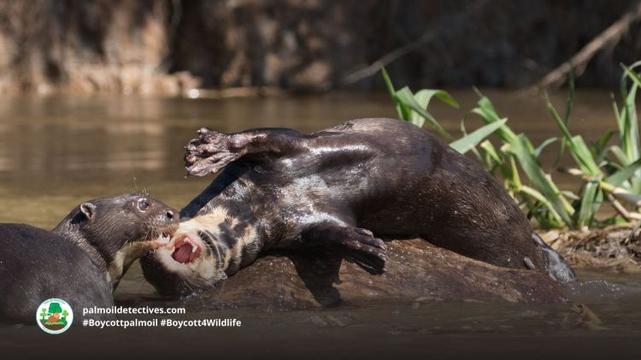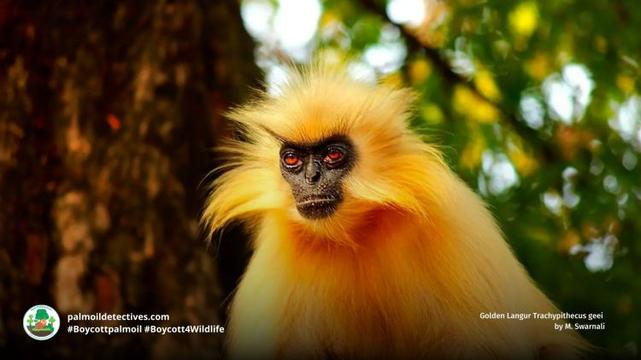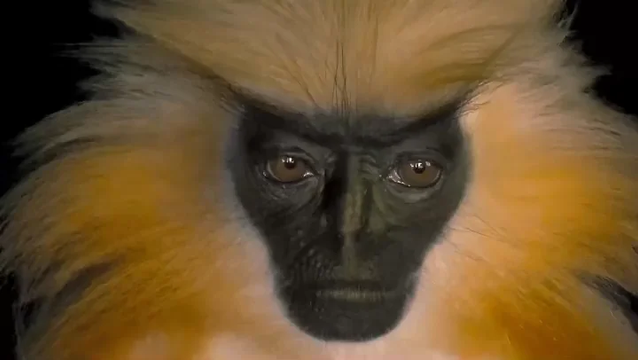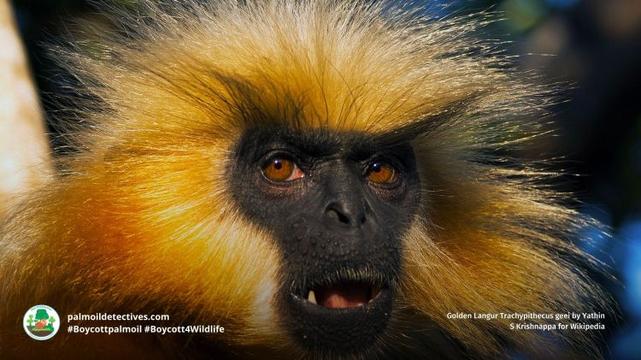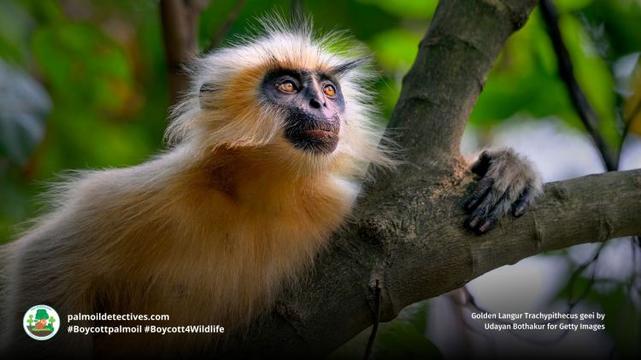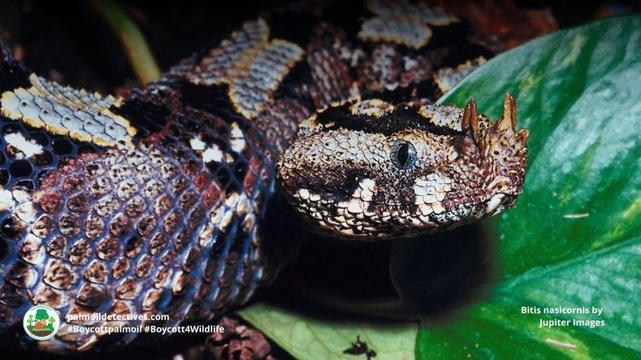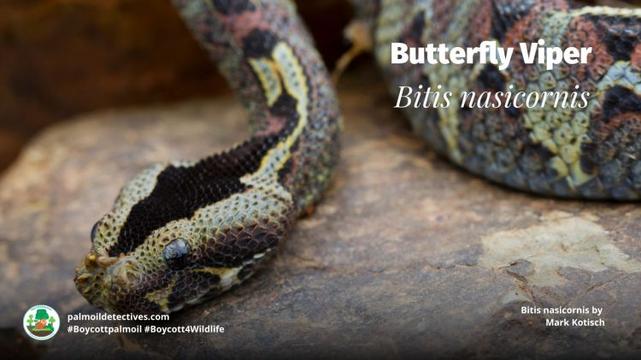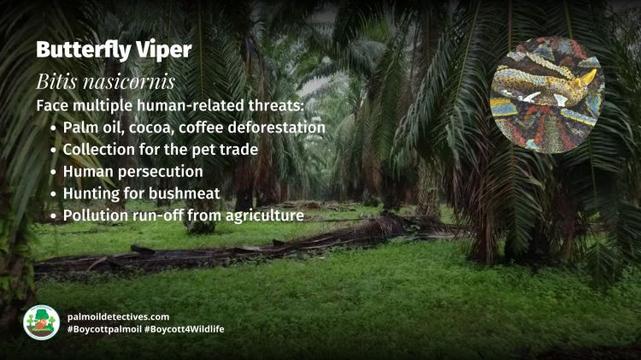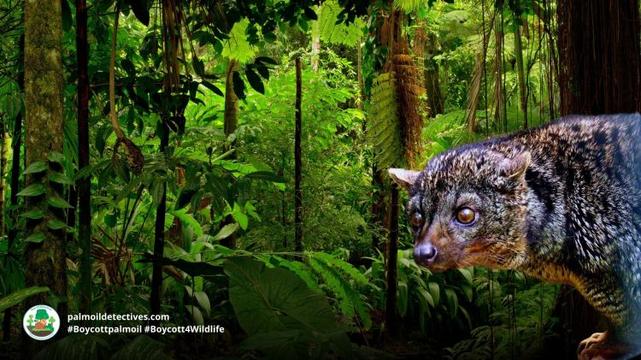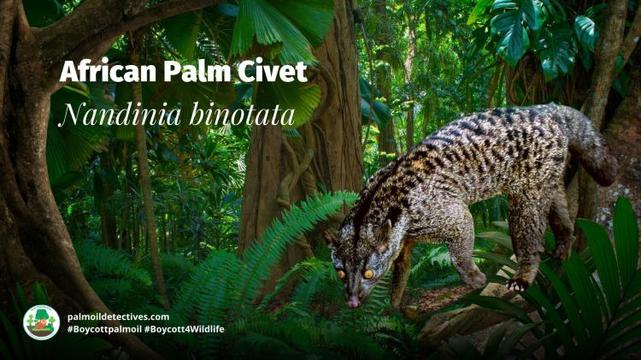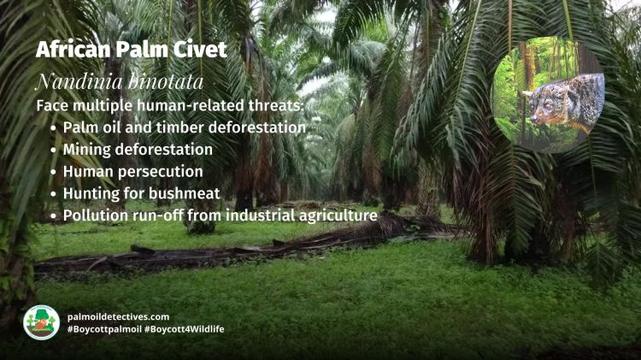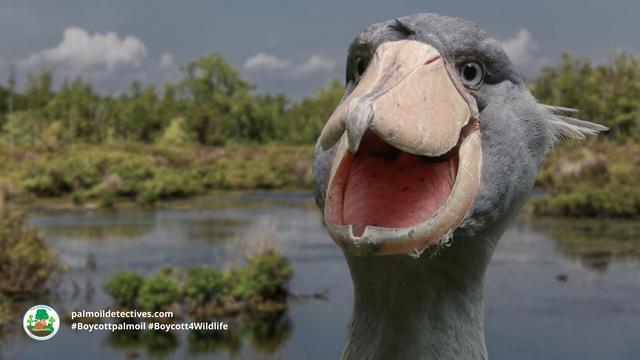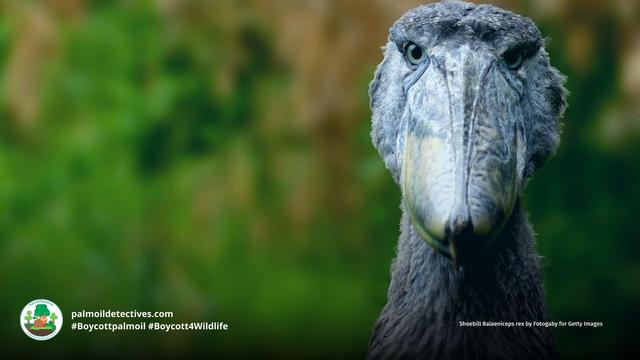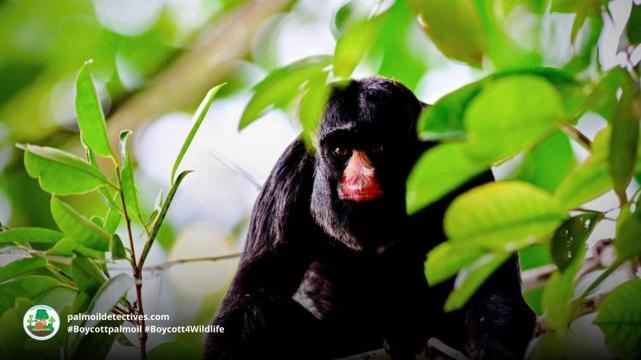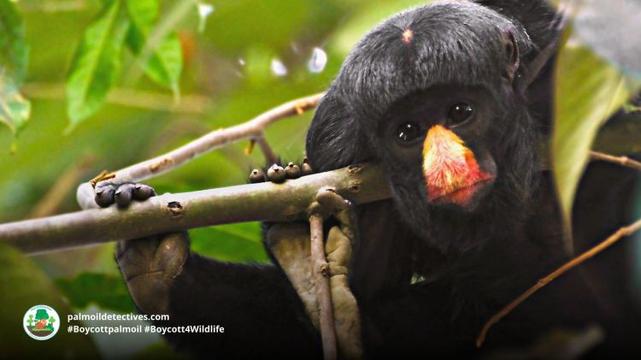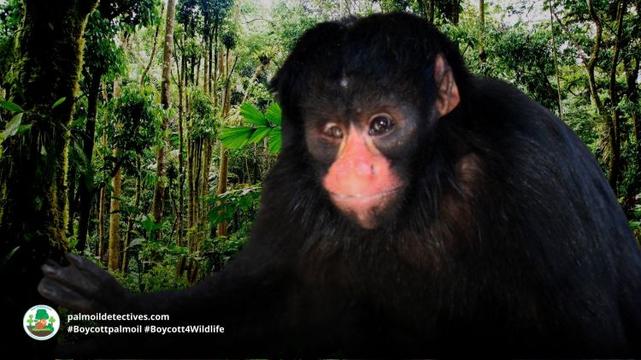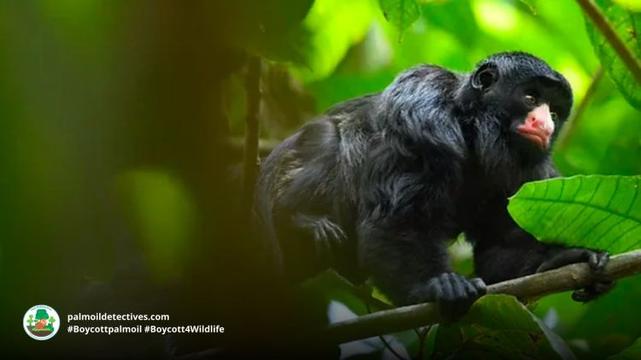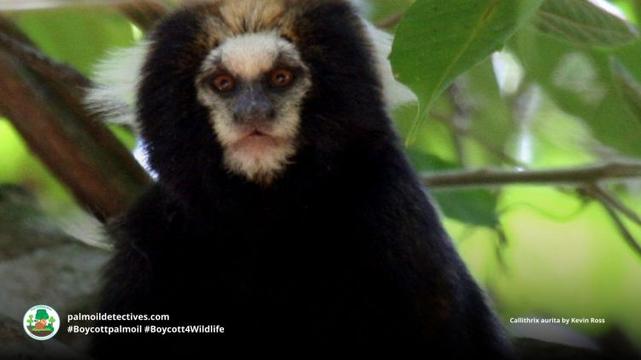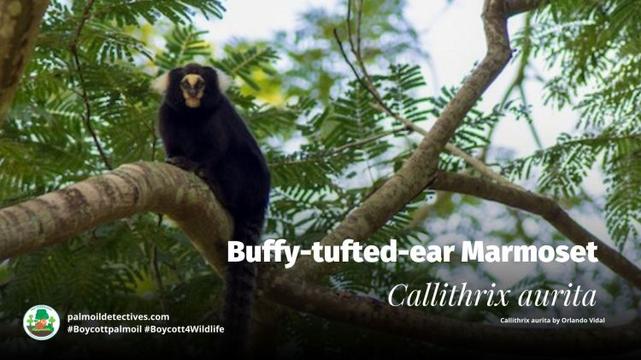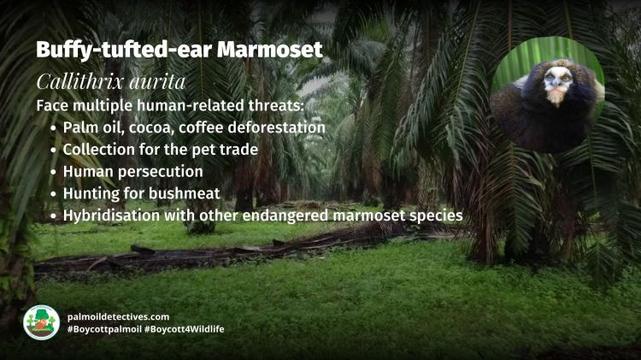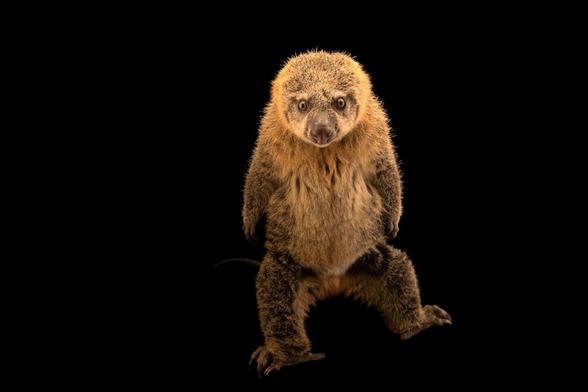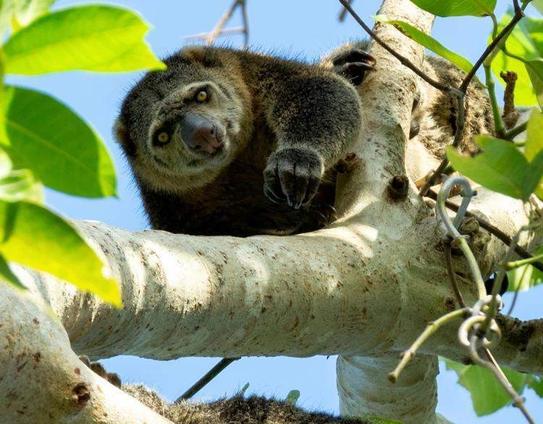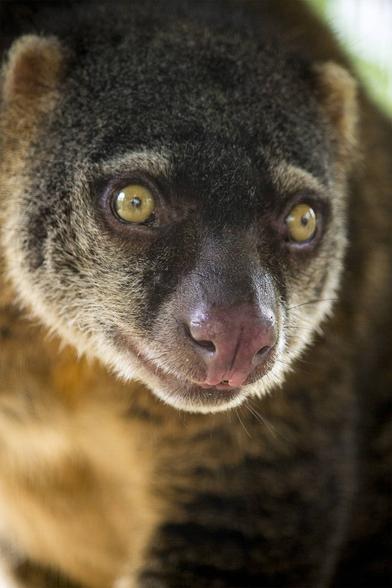African Manatees 🐋💙 have been a fixture in #African myths for millennia 🇨🇩🇨🇲🇬🇭🇱🇷 Now they a threatened by #palmoil 🌴🩸🔥 #hunting, #cocoa and the pet trade. Help them every time you shop and #Boycottpalmoil 🌴🪔⛔️ #Boycott4Wildlife @palmoildetect https://palmoildetectives.com/2023/10/08/african-manatee-trichechus-senegalensis/?utm_source=mastodon&utm_medium=Palm+Oil+Detectives&utm_campaign=publer
#Hunting
Giant Otter Pteronura brasiliensis
Giant Otter Pteronura brasiliensis
Red List Status: Endangered
Locations: Amazon, Orinoco, and La Plata river systems across Brazil, Peru, Colombia, Venezuela, Ecuador, Bolivia, Guyana, Suriname, French Guiana, and Paraguay. Populations persist in protected wetlands, slow-moving rivers, and oxbow lakes within the Amazon basin and scattered tributaries throughout northern and central South America.
The agile and graceful tumbling Olympians of the Amazonian rivers, Giant #Otters are able to swim 100 metres in less than 30 seconds. They are also known as the Lobo de Rio (the River wolf), Los Lobos del Rio (Wolves of the River) and Ariranha. They are most active in the mornings and evenings and take a siesta during the hottest parts of the day. Known for their striking size and the chorus of whistles and barks echoing through flooded forests, giant otters are social, vocal, and deeply bonded to their family groups. But the rivers they call home are under siege. The most significant threats to giant otters are anthropogenic pressures of deforestation for palm oil, soy and meat, pollution from mining and climate change. They are also illegally hunted and traded for their pelts or killed in retribution by fishermen. Help them and be #vegan, use your wallet as a weapon and #BoycottPalmOil #Boycott4Wildlife.
https://youtu.be/EAqLxMZ24wY?si=X0tfWCluIuR3ax92
#GiantOtters 🦦💜 are the agile, graceful guardians of Amazonian rivers in #SouthAmerica 🇧🇷 #Endangered by #gold #mining 🚜🔥 #palmoil and cattle ranches. Help them in the supermarket, go #vegan and #Boycottpalmoil #Boycott4Wildlife @palmoildetect https://palmoildetectives.com/2022/09/04/giant-otter-pteronura-brasiliensis/
Share to BlueSky Share to TwitterGiant #Otters 🦦🤎are intelligent and resourceful guardians of the #Amazon #SouthAmerica. 🇵🇪🇪🇨🇧🇷They are #Endangered from #gold #mining, #palmoil #soy and cattle ranching. Help them by going #vegan and #Boycottpalmoil #Boycott4Wildlife @palmoildetect https://palmoildetectives.com/2022/09/04/giant-otter-pteronura-brasiliensis/
Share to BlueSky Share to TwitterThreats
Threats are predominantly related to the river otter being pushed out of their ecosystems by anthropogenic pressures.
The destruction of the river otters’ riparian habitat, overfishing, contamination of aquatic ecosystems (especially for gold mining, fossil fuel exploration, and the use of pesticides and fertilizers for monocultures), domestic animal diseases, and mismanaged tourism It seems likely that mining activities and the widespread conversion of forest into agricultural and pasture lands will continue unabated in the near future as part of the economic development of the Amazonian countries.
Giant otters are threatened by a range of human created hazards including: the illegal pet trade, competition with fishermen, gold and fossil fuel mining and ecosystem conversion to monocultures such as palm oil and soy.
Appearance and Behaviour
Giant otters are the largest members of the mustelid family, reaching up to 1.8 metres in length and weighing between 22 and 34 kilograms. Their sleek, chocolate-brown fur glistens when wet, and each otter sports a unique white throat patch, as individual as a fingerprint. With webbed feet and a powerful, flattened tail, the giant otter is built for speed and grace beneath the surface. They move through water with fluid, serpentine motions, surfacing to snort and chatter with their group.
Giant otters are intensely social, living in family groups of up to 10, communicating with a rich vocabulary of whistles, screams, and barks. A family has a home range of 12 sq. km. They communicate through a noisy series of hums, coos, barks and whistles. They are cooperative and peaceful together and often groom, rest and hunt together and cooperatively construct burrows and establish territories using scent markings from their anal glands to delineate territories.
Newborn pups squeak to elicit attention, while older young whine as they participate in group activities. When intruders invade their territory, the parents and other adults in communities will defend the offspring against danger. Their playful nature is evident as they slide down muddy banks or toss fish to one another, but every action is purposeful—defending territory, nurturing young, or foraging together as a tight-knit team.
Threats
Palm oil and agricultural deforestation
The Red List classifies the giant otter as Endangered, with palm oil expansion and agricultural deforestation posing severe threats. Forests are stripped bare along riverbanks for plantations and grazing, leaving otters exposed and vulnerable. As vegetation disappears, riverbanks erode, dens collapse, and the intricate web of life that sustains the giant otter unravels. The destruction is relentless, turning vibrant wetlands into silent, empty channels.
Gold mining and water pollution
Gold mining scars the Amazon, releasing mercury and other toxins into waterways. These poisons accumulate in fish—the giant otter’s primary food source—and in the otters themselves, causing illness and reproductive failure. Mining dredges churn up riverbeds, clouding the water and destroying the submerged vegetation that shelters otter families. Pollution from agriculture and mining is now one of the leading causes of population decline, with entire river systems rendered uninhabitable for years at a time.
Overfishing and prey depletion
Overfishing by humans strips rivers of the catfish, characins, and perch that giant otters depend on. As fish stocks dwindle, otter families are forced to expand their territories or go hungry. Competition with commercial fisheries intensifies during the dry season when water levels drop and prey becomes scarce. The loss of food drives otters into conflict with humans and increases the risk of starvation, especially for pups.
Hunting and direct persecution
Historically, giant otters were hunted for their luxurious pelts, leading to catastrophic population crashes. Although hunting is now illegal in most range countries, illegal killing persists, driven by fear, competition, or ignorance. Otters are sometimes shot by fishers who see them as rivals, or trapped in snares set for other animals. Each loss tears at the fabric of otter society, as these animals rely on strong family bonds for survival.
Habitat fragmentation and climate change
The patchwork of remaining habitat isolates otter populations, reducing genetic diversity and making recovery difficult. Climate change brings unpredictable floods and droughts, altering the rhythm of the rivers and the abundance of fish. As the Amazon warms and dries, the future of the giant otter hangs in the balance, tied to the fate of the forests and waters they call home.
Diet
Giant otters are expert fish hunters, preying primarily on catfish, perch, and characins. Their hunting is a spectacle—sleek bodies slicing through water, eyes alert for the flicker of scales. Otters hunt cooperatively, corralling schools of fish and snatching them with lightning speed. During periods of low fish abundance, they may supplement their diet with crustaceans, small reptiles, or amphibians. Seasonal floods and droughts shape their foraging patterns, with families moving between oxbow lakes and river channels to follow the shifting bounty of the Amazon. Every meal is a communal event, with otters sharing catches and calling family members to feast.
Reproduction and Mating
Giant otter breeding peaks in late spring and early summer, though some pairs mate year-round. Females are receptive for three to ten days of a 21-day oestrous cycle, with courtship and mating taking place in the water. After a gestation of 65 to 70 days, the female gives birth to two to five altricial pups in a den dug into the riverbank. Pups are born blind and helpless, relying entirely on the care of both parents and older siblings. The family’s social bonds are strongest during this period, with constant grooming, feeding, and play. Pups emerge from the den at around four weeks, learning to swim and hunt under the watchful eyes of the group. In the wild, giant otters can live up to 15 years, although most do not reach this age due to the many dangers they face.
Geographic Range
These energetic mustelids are endemic to South America, with populations distributed east of the Andes in the Orinoco, Amazonas, and Parana basins, and the hydrographic networks of the Guianas.
Giant otters inhabit the slow-moving rivers, oxbow lakes, and wetlands of the Amazon, Orinoco, and La Plata basins. Their range spans Brazil, Peru, Colombia, Venezuela, Ecuador, Bolivia, Guyana, Suriname, French Guiana, and Paraguay. Once widespread, giant otters have vanished from Uruguay and Argentina, and their populations are now fragmented, surviving mainly in protected reserves and remote tributaries. In Bolivia, only about 350 individuals remain, mostly within national parks. The sounds of the giant otter—chirps, whistles, and splashes—are now rare in many rivers where they once flourished.
FAQs
What is the current population size of the giant otter Pteronura brasiliensis?
Wild populations of the giant otter are estimated at between 4,400 and 7,600 individuals, with numbers declining due to ongoing habitat loss, pollution, and hunting. In some regions, such as Bolivia, only a few hundred remain, mostly in protected areas. The largest populations are found in the Amazon and Orinoco basins, but even here, otters are increasingly isolated by deforestation and river degradation (Groenendijk et al. 2015).
How long do giant otters live in the wild?
In the wild, giant otters can live up to 15 years, although the average lifespan is closer to 4.5 to 5.5 years due to predation, disease, and human threats. In captivity, some individuals have reached 17 to 20 years, but such longevity is rare in the wild (Groenendijk et al. 2014).
What are the main threats for the giant otter?
The greatest challenges facing the giant otter are palm oil-driven deforestation, gold mining, water pollution, overfishing, and habitat fragmentation. These threats destroy riverbank vegetation, poison waterways, and deplete fish stocks, undermining the otters’ ability to survive and reproduce. Effective protection requires indigenous-led conservation, agroecology, and the safeguarding of river ecosystems from further industrial encroachment (Mongabay, 2025).
Do giant otters make good pets?
Giant otters do not make good pets. Captivity causes extreme stress, loneliness, and early death for these highly social, intelligent animals. The illegal pet trade tears families apart and fuels extinction, as pups are stolen from their dens and forced into unnatural, impoverished conditions. Protecting giant otters means rejecting the illegal pet trade and supporting their right to live wild and free in their forest and river homes.
Take Action!
Fight for the survival of the giant otter every time you shop—#BoycottPalmOil #Boycott4Wildlife. Support indigenous-led conservation and agroecology. Reject products linked to deforestation, gold mining, and the illegal wildlife trade. Adopt a #vegan lifestyle and #BoycottMeat to protect wild and farmed animals alike. Every choice matters—stand with the giant otter and defend the rivers of the Amazon.
You can support this beautiful animal
Further Information
Groenendijk, J., Marmontel, M., Van Damme, P., Schenck, C., Schenck, C. & Wallace, R. 2021. Pteronura brasiliensis. The IUCN Red List of Threatened Species 2021: e.T18711A164580466. https://dx.doi.org/10.2305/IUCN.UK.2021-3.RLTS.T18711A164580466.en. Accessed on 27 August 2022.
Groenendijk, J., Hajek, F., Duplaix, N., Reuther, C., Van Damme, P., Schenck, C., … & Waldemarin, H. F. (2015). Pteronura brasiliensis (Carnivora: Mustelidae). Mammalian Species, 49(953), 97–108. https://doi.org/10.1093/mspecies/sev011
Mongabay. (2025). Researchers identify 22 key areas for protecting struggling giant otters. https://news.mongabay.com/2025/06/researchers-identify-22-key-areas-for-protecting-struggling-giant-otters/
Giant Otter Pteronura brasiliensis
How can I help the #Boycott4Wildlife?
Take Action in Five Ways
1. Join the #Boycott4Wildlife on social media and subscribe to stay in the loop: Share posts from this website to your own network on Twitter, Mastadon, Instagram, Facebook and Youtube using the hashtags #Boycottpalmoil #Boycott4Wildlife.
2. Contribute stories: Academics, conservationists, scientists, indigenous rights advocates and animal rights advocates working to expose the corruption of the palm oil industry or to save animals can contribute stories to the website.
Mel Lumby: Dedicated Devotee to Borneo’s Living Beings
Anthropologist and Author Dr Sophie Chao
Health Physician Dr Evan Allen
The World’s Most Loved Cup: A Social, Ethical & Environmental History of Coffee by Aviary Doert
How do we stop the world’s ecosystems from going into a death spiral? A #SteadyState Economy
3. Supermarket sleuthing: Next time you’re in the supermarket, take photos of products containing palm oil. Share these to social media along with the hashtags to call out the greenwashing and ecocide of the brands who use palm oil. You can also take photos of palm oil free products and congratulate brands when they go palm oil free.
https://twitter.com/CuriousApe4/status/1526136783557529600?s=20
https://twitter.com/PhillDixon1/status/1749010345555788144?s=20
https://twitter.com/mugabe139/status/1678027567977078784?s=20
4. Take to the streets: Get in touch with Palm Oil Detectives to find out more.
5. Donate: Make a one-off or monthly donation to Palm Oil Detectives as a way of saying thank you and to help pay for ongoing running costs of the website and social media campaigns. Donate here
Pledge your support#Amazon #Bolivia #Boycott4wildlife #BoycottMeat #BoycottPalmOil #Brazil #carnivores #climateChange #Ecuador #endangered #EndangeredSpecies #FrenchGuiana #GiantOtterPteronuraBrasiliensis #GiantOtters #gold #goldMining #Guyana #hunting #Mammal #mining #mustelid #Otters #palmoil #Paraguay #Peru #SouthAmericaSpeciesEndangeredByPalmOilDeforestation #SouthAmerica #soy #Tweet #vegan #Venezuela
Golden Langur Trachypithecus geei
Golden Langur Trachypithecus geei
Red List Status: Endangered
Locations: Western Assam (India), Black Mountain (Bhutan), Manas National Park, Chakrashila Wildlife Sanctuary, Kakoijana Reserve Forest, and forest fragments along the foothills of the Himalayas.
The regal, striking looking Golden #langurs Trachypithecus geei is also known by the common names Gee’s Golden #langur. They are the most endangered primate species in #India and are considered to be sacred to many Himalayan peoples. Once widespread, they are now only found in a handful of fragmented forests straddling India and Bhutan. They are classified as endangered due to #palmoil, #meat and #timber #deforestation and hunting. Golden langurs are known for their expressive eyes and grumpy expressions. This has made them the subject of global fascination and online memes. Help them every time you shop and be #vegan, #Boycottpalmoil and #Boycott4Wildlife
Golden #Langurs 🙉🐒 are the most #endangered primate in #India 🇮🇳🪷 threatened by #palmoil and #meat #deforestation. Help save them and #Boycottpalmoil 🌴🩸🚜🔥☠️❌ #Boycott4Wildlife in the supermarket! @palmoildetect https://palmoildetectives.com/2023/03/19/golden-langur-trachypithecus-geei/
Share to BlueSky Share to TwitterRegal and striking Golden #Langurs are known for their grumpy faces 🙊🐒 😠They have reason to be annoyed #Assam #India 🇮🇳 is being destroyed for #palmoil #deforestation. Fight for them when you shop! #BoycottPalmOil #Boycott4Wildlife @palmoildetect https://palmoildetectives.com/2023/03/19/golden-langur-trachypithecus-geei/
Share to BlueSky Share to TwitterAppearance & Behaviour
Adults golden langurs are striking with their vivid black faces framed by a mane of pale hair, and their expressive, deep-set eyes reflect intelligence and curiosity. By contrast, infant langurs are born with cream-coloured fur that darkens as they mature. Golden langurs are medium-sized primates, with males weighing up to 13 kilograms and females slightly less. Their long tails, often longer than their bodies, help them balance as they leap gracefully between branches. Golden langurs are highly social, living in groups of up to 40 individuals, and communicate with a repertoire of calls, grunts, and alarm barks. They spend most of their lives high in the trees, rarely descending to the ground, and their movements are fluid and silent, like shadows flickering through the leaves.
Golden Langur Eyes: Windows to Intelligent Souls
The eyes of a golden langur are truly captivating, reminiscent of the molten gold in the dappled sunlight of their forest home in India. These golden langur eyes are the subject of countless online memes, possibly because of their human-like expressions. The expressive eyes of golden langurs convey a range of emotions that resonate deeply with people. Their gaze can appear curious, contemplative, cantankerous, moody or even agitated, making these animals relatable and endearing to a broad audience. This relatability, combined with their striking appearance, makes golden langur eyes a perfect focal point for memes, highlighting the beauty of these monkeys and the importance of conserving their natural habitats.
Golden langurs are heavily dependent upon forests for their ongoing existence. They are diurnal, preferring to forage in the morning and afternoon with a midday siesta. They spend most of the time in tree canopies and rarely come down to the ground.
Social grooming and social interaction is important to Golden langurs and they typically live in troops of between 8 to 50 individuals with several females to each adult male. Grooming is an important social activity and strengthens connection between group members.
Threats
Palm oil, timber, charcoal and livestock deforestation
The Red List classifies the golden langur as Endangered, with palm oil expansion and deforestation for charcoal, livestock and timber as major drivers of habitat loss. Vast tracts of forest have been cleared for plantations and farmland, leaving the golden langur’s habitat fragmented and isolated. As the forest disappears, langur groups are forced into ever-smaller patches, increasing competition for food and shelter and exposing them to greater risks from predators and humans. The relentless pace of deforestation threatens to erase the golden langur from much of their former range, turning once-vibrant forests into silent, empty fields.
Logging and habitat fragmentation
Logging has carved roads and clearings through the golden langur’s habitat, severing the canopy highways they rely on for movement and social cohesion. Fragmentation isolates groups, reducing genetic diversity and making populations more vulnerable to disease and environmental change. In some areas, only a handful of individuals remain, cut off from neighbouring groups by expanses of cleared land. The scars of logging are visible everywhere—fallen trees, eroded soil, and the distant sound of chainsaws echoing through the forest.
Human-wildlife conflict, poaching and the illegal pet trade
As forests shrink, golden langurs are increasingly forced into contact with humans, leading to conflict and persecution. Some are killed or captured for the illegal pet trade. There is a high rate of juvenile mortality and inbreeding when golden langurs are collected as pets. This is a cruel and devastating fate for any golden langurs who are captured. Some golden langurs fall victim to retaliatory attacks when they raid crops. Snares and traps set for other animals can maim or kill golden langurs. Unexpected human-caused deaths exert a heavy toll on wild troops and their social cohesion and structure. Poaching remains a persistent threat, fuelled by demand for exotic pets and body parts in Chinese medicine.
Climate change
Shifting rainfall patterns and rising temperatures threaten to alter the delicate balance of the Himalayan forests. Changes in fruiting and flowering times can disrupt the golden langur’s food supply, while extreme weather events—such as floods and landslides—destroy habitat and isolate populations even further. The golden langur’s survival is now tied to the fate of the forests and the stability of the climate.
Habitat & geographical region
The golden langur’s range is restricted to the forests of western Assam in India and the Black Mountain region of Bhutan. Key strongholds include Manas National Park, Chakrashila Wildlife Sanctuary, Kakoijana Reserve Forest, and a scattering of forest fragments along the Himalayan foothills. Once widespread, the golden langur now survives in isolated pockets, their habitat reduced and fragmented by decades of deforestation and human encroachment.
Diet
The Golden langur is primarily folivorous, feeding on a diverse array of young leaves, fruits, flowers, and seeds. Their diet shifts with the seasons, following the cycles of fruiting and leaf flush in the forest. In times of scarcity, they may consume bark, twigs, or cultivated crops, bringing them into conflict with farmers. Golden langurs are selective feeders, choosing the most nutritious and digestible parts of plants, and their foraging plays a vital role in seed dispersal and forest regeneration.
Mating and reproduction
Golden langurs breed throughout the year, with a peak in births during the late monsoon and early winter months. Females give birth to a single infant after a gestation period of around 200 days. The newborns are born with lighter fur, which darkens as they mature, and are cared for by their mothers and other group members in a system of cooperative parenting. Social bonds are strong, with frequent grooming and play reinforcing relationships within the group. Infants cling tightly to their mothers as the group moves through the canopy, learning the skills they will need to survive in a challenging and ever-changing environment. The average lifespan of a golden langur in the wild is estimated at around 15 to 20 years, though few reach this age due to the many threats they face.
FAQs
What is the current population size of the golden langur Trachypithecus geei?
Estimates suggest that fewer than 6,500 golden langurs remain in the wild, with populations continuing to decline due to ongoing habitat loss, fragmentation, and poaching. The largest populations are found in Manas National Park and the surrounding forests of Assam and Bhutan, but even here, numbers are falling as forests are cleared for agriculture and plantations. Researchers warn that without urgent action, the golden langur could disappear from much of their current range within a generation (Biswas et al., 2024; Das et al., 2021).
How long do golden langurs live in the wild?
Golden langurs can live up to 20 years in the wild, though most do not reach this age due to threats from habitat loss, poaching, and conflict with humans. In captivity, some individuals have lived longer, but the stresses of confinement and social isolation take a heavy toll on their health and wellbeing. The golden langur’s longevity is closely tied to the health of their forest home and the strength of their social bonds (Das et al., 2021).
What are the main conservation challenges for the golden langur?
The greatest challenges facing the golden langur are palm oil, charcoal and meat deforestation, human-wildlife conflict, poaching and collection for the illegal pet trade. These threats destroy the forests these remarkable primates depend on, isolate populations, and expose them to increased risk of disease and predation. Effective protection requires indigenous-led conservation, agroecology, and the safeguarding of forest ecosystems from further destruction. Help them every time you shop and be #Vegan #BoycottPalmOil #Boycott4Wildlife (Biswas et al., 2020; Das et al., 2021).
Do golden langurs make good pets?
Absolutely not! Golden langurs do not make good pets. Captivity causes extreme stress, loneliness, and early death for these highly social, intelligent primates. The illegal pet trade tears families apart and fuels extinction, as infants are stolen from their mothers and forced into unnatural, impoverished conditions. Protecting golden langurs means rejecting the illegal pet trade and supporting their right to live wild and free in their forest homes (Das et al., 2021).
Take Action!
Use your wallet as a weapon and #BoycottPalmOil #Boycott4Wildlife. Support indigenous-led conservation and agroecology. Reject products linked to deforestation and the illegal wildlife trade. Adopt a #vegan lifestyle and #BoycottMeat to protect wild and farmed animals alike. Every choice matters—stand with the golden langur and defend the forests of Assam and Bhutan.
Spectacled bear sticking out his tongue by Natalia So for Getty ImagesSupport the conservation of this species
This animal has no protections in place. Read about other forgotten species here. Create art to support this forgotten animal or raise awareness about them by sharing this post and using the #Boycottpalmoil #Boycott4Wildlife hashtags on social media. Also you can boycott palm oil in the supermarket.
Further Information
Biswas, J., Shil, J., Sasi, R., Ahmed, M. U., Barman, K., Das, N., Basumatary, B., & Kumara, H. N. (2024). Ecological determinants of occupancy of golden langur Trachypithecus geei and its population characteristics in India. Global Ecology and Conservation, 53, e03003. https://doi.org/10.1016/j.gecco.2024.e03003
Das, J., Medhi, R. & Molur, S. 2008. Trachypithecus geei. The IUCN Red List of Threatened Species 2008: e.T22037A9348940. https://dx.doi.org/10.2305/IUCN.UK.2008.RLTS.T22037A9348940.en. Accessed on 12 November 2022.
Gee’s Golden Langur Trachypithecus geei on Wikipedia
An Indian documentary about the dangers of consuming palm oil
How can I help the #Boycott4Wildlife?
Take Action in Five Ways
1. Join the #Boycott4Wildlife on social media and subscribe to stay in the loop: Share posts from this website to your own network on Twitter, Mastadon, Instagram, Facebook and Youtube using the hashtags #Boycottpalmoil #Boycott4Wildlife.
2. Contribute stories: Academics, conservationists, scientists, indigenous rights advocates and animal rights advocates working to expose the corruption of the palm oil industry or to save animals can contribute stories to the website.
Mel Lumby: Dedicated Devotee to Borneo’s Living Beings
Anthropologist and Author Dr Sophie Chao
Health Physician Dr Evan Allen
The World’s Most Loved Cup: A Social, Ethical & Environmental History of Coffee by Aviary Doert
How do we stop the world’s ecosystems from going into a death spiral? A #SteadyState Economy
3. Supermarket sleuthing: Next time you’re in the supermarket, take photos of products containing palm oil. Share these to social media along with the hashtags to call out the greenwashing and ecocide of the brands who use palm oil. You can also take photos of palm oil free products and congratulate brands when they go palm oil free.
https://twitter.com/CuriousApe4/status/1526136783557529600?s=20
https://twitter.com/PhillDixon1/status/1749010345555788144?s=20
https://twitter.com/mugabe139/status/1678027567977078784?s=20
4. Take to the streets: Get in touch with Palm Oil Detectives to find out more.
5. Donate: Make a one-off or monthly donation to Palm Oil Detectives as a way of saying thank you and to help pay for ongoing running costs of the website and social media campaigns. Donate here
Pledge your support#animals #Assam #Bhutan #Boycott4wildlife #BoycottMeat #BoycottPalmOil #ChineseMedicine #climateChange #deforestation #endangered #EndangeredSpecies #ForgottenAnimals #GoldenLangurTrachypithecusGeei #herbivore #herbivores #humanWildlifeConflict #hunting #illegalPetTrade #India #langur #Langurs #livestock #Mammal #meat #meatAgriculture #monkey #monkeys #PalmOil #palmOilDeforestation #palmoil #poachers #poaching #Primate #timber #vegan
Butterfly Viper Bitis nasicornis
Butterfly Viper Bitis nasicornis
Vulnerable
Extant (resident)
Angola; Cameroon; Central African Republic; Congo; The Democratic Republic of Congo; Côte d’Ivoire; Equatorial Guinea; Gabon; Ghana; Guinea; Guinea-Bissau; Kenya; Liberia; Nigeria; Rwanda; Sierra Leone; South Sudan; Tanzania, United Republic of Togo; Uganda.
Presence Uncertain
Zambia
Although they possess one of the most potent venoms of all snakes in Africa, Butterfly Vipers are surprisingly placid and won’t attack unless provoked or threatened. They are known by several common names: Rhinoceros viper, River Jack, the Rhinoceros horned viper and the Horned puff adder. They are appreciated for their vividly coloured markings that keep them camouflaged on the forest floor.
Share to BlueSky Share to Twitter Share to BlueSky Share to TwitterThe Butterfly #viper is a stunning #snake in #Africa threatened by #deforestation. Raise your voice for beautiful #African #vipers by saying no to #palmoil #deforestation #Boycottpalmoil #Boycott4Wildlife
The forest is highly fragmented and not well-protected in Rwanda, where Butterfly vipers live and are likely to be at risk from deforestation. This species has declined significantly in a protected area (Reading et al. 2010), which could be due to exploitation or another unknown threat.
Appearance & Behaviour
The stunning dragon-like viper species Bitis nasicornis has prominent nasal ‘horns’ and striking colour patterns consist of 15-18 blue or green markings along with a bright yellow line down the centre. Dark crimson triangles adorn their flanks and are bordered with vibrant green or blue. Female vipers grow larger than males and can reach 110 cm in length.
They are primarily nocturnal and solitary and although venomous, they are generally placid in nature. They dwell in the dappled sunlight of the forest floor, which provides excellent camouflage. Although ground-dwelling, they have a prehensile tail which enables them to climb trees and thickets.
Powerful swimmers, they often hunt by ambush by waiting silently and motionless until the right moment to strike. Rhinoceros vipers have a loud hiss that sounds like a shriek – this is said to be the loudest hiss of any African snake.
Threats
The Rhinoceros viper faces many threats, these include:
- Collection for the international pet trade.
- Human persecution and poaching for human consumption.
- Deforestation for palm oil, coffee and cocoa agriculture.
- Deforestation for mining.
- Pollution run off from agriculture.
Venom
The Butterfly viper’s venom is particularly potent and only a small dose is enough to be deadly. The venom is both neurotoxic and hemotoxic meaning that it destroys tissue, blood vessels and adversely affects the nervous system of the victim. The fangs are hollow and when in use they deeply penetrate the skin of the victim with venom flowing into the wound. When not in use, the viper’s fangs fold into the roof of their mouth.
Their geographic range makes them isolated and therefore few human bites are officially recorded. Reported symptoms post bite include massive swelling and skin necrosis. In America, one instance of a pet Butterfly viper biting his own led to the owner’s death.
Habitat
Butterfly vipers are found all over the tropical equatorial countries of Africa in West Africa and central Africa and western Kenya. Their habitat range has been enormously reduced by deforestation for agriculture including palm oil, cocoa and coffee, as well as mining and the associated pollution run-off this causes.
Diet
They are carnivores and feed opportunistically on small mammals, reptiles and fish by laying in wait and then attacking with a sudden unexpected strike. They have been known to consume rodents, toads, frogs and fish.
Mating and breeding
In West Africa they give birth during the during the rainy monsoon season of March-April. In eastern African nations they breed throughout the entire year. They give birth to live young and produce around 6 to 38 snake neonates.
The Rhinoceros viper/Butterfly viper has no formal protections in place.
The #Boycott4Wildlife offers a way for consumers to fight back against palm oil deforestation and other forms of animal cruelty and slavery. If you wish to raise your voice for Butterfly Vipers, join the #Boycott4Wildlife.
You can support this beautiful animal
There are no known formal conservation activities in place for this animal. Make sure that you #Boycottpalmoil and #Boycott4Wildlife in the supermarket and raise awareness of the plight of this beautiful animal in order to support their survival! Find out more here
Further Information
Penner, J., Rödel, M.-O., Luiselli, L., Trape, J.-F., Spawls, S., Malonza, P.K., Beraduccii, J., Chippaux, J.-P., LeBreton, M., Kusamba, C. & Gonwouo, N.L. 2021. Bitis nasicornis. The IUCN Red List of Threatened Species 2021: e.T13300910A13300919. https://dx.doi.org/10.2305/IUCN.UK.2021-3.RLTS.T13300910A13300919.en. Accessed on 12 September 2022.
Bitis Nasicornis on Wikipedia
Butterfly Viper on Animalia.bio
How can I help the #Boycott4Wildlife?
Take Action in Five Ways
1. Join the #Boycott4Wildlife on social media and subscribe to stay in the loop: Share posts from this website to your own network on Twitter, Mastadon, Instagram, Facebook and Youtube using the hashtags #Boycottpalmoil #Boycott4Wildlife.
2. Contribute stories: Academics, conservationists, scientists, indigenous rights advocates and animal rights advocates working to expose the corruption of the palm oil industry or to save animals can contribute stories to the website.
Mel Lumby: Dedicated Devotee to Borneo’s Living Beings
Anthropologist and Author Dr Sophie Chao
Health Physician Dr Evan Allen
The World’s Most Loved Cup: A Social, Ethical & Environmental History of Coffee by Aviary Doert
How do we stop the world’s ecosystems from going into a death spiral? A #SteadyState Economy
3. Supermarket sleuthing: Next time you’re in the supermarket, take photos of products containing palm oil. Share these to social media along with the hashtags to call out the greenwashing and ecocide of the brands who use palm oil. You can also take photos of palm oil free products and congratulate brands when they go palm oil free.
https://twitter.com/CuriousApe4/status/1526136783557529600?s=20
https://twitter.com/PhillDixon1/status/1749010345555788144?s=20
https://twitter.com/mugabe139/status/1678027567977078784?s=20
4. Take to the streets: Get in touch with Palm Oil Detectives to find out more.
5. Donate: Make a one-off or monthly donation to Palm Oil Detectives as a way of saying thank you and to help pay for ongoing running costs of the website and social media campaigns. Donate here
Pledge your support#Africa #African #Angola #animals #Boycott4wildlife #Boycott4WildlifeTweet #BoycottPalmOil #ButterflyViperBitisNasicornis #Cameroon #Congo #deforestation #ForgottenAnimals #Gabon #hunting #Liberia #Nigeria #PalmOil #palmOilDeforestation #palmoil #poaching #Reptile #SierraLeone #snake #Uganda #viper #vipers #VulnerableSpecies
African Palm Civet Nandinia binotata
African Palm Civet Nandinia binotata
Least concern (in 2016) but likely becoming endangered now.
African Palm Civets Nandinia binotata are ecosystem-critical seed dispersers. Their spotted coats blend into the dappled forest shadows of #Liberia and #Gabon in #Africa. Although they were once widespread, the African palm civet now faces mounting pressure from palm oil-driven deforestation, mining, and relentless hunting for #bushmeat. Their survival hangs in the balance —fight for their survival every time you shop, be #Vegan for them and #BoycottPalmOil #Boycott4Wildlife.
Vital seed dispersers in #African forests, African palm civets are hunted for #bushmeat in #Gabon 🇬🇦 #Liberia 🇱🇷 Say NO to #palmoil #deforestation and hunting. Fight for them! Be #Vegan 🫑🍆 #BoycottPalmOil 🌴🩸🚜☠️🔥❌ #Boycott4Wildlife @palmoildetect https://palmoildetectives.com/2022/11/13/african-palm-civet-nandinia-binotata/
Share to BlueSky Share to TwitterAppearance & Behaviour
The African palm civet is a small, cat-like carnivore, their slender body and long, ringed tail perfectly adapted for life in the treetops. Their fur ranges from grey to dark brown, with distinctive dark spots decorating their back. Males are slightly larger than females, typically weighing between 1 and 3 kilograms and measuring 30 to 70 centimetres in length. Two scent glands beneath their abdomen allow them to mark territory and communicate with potential mates. African palm civets are nocturnal, spending most of their lives high in the canopy, where they forage, rest, and raise their young. They are nocturnal and spend the majority of their lives in the tree canopies of rainforests eating from fruit-bearing trees like banana, papaya, fig and corkwood.
Threats
The main threats to African palm civets are anthropogenic and include:
Hunting for bushmeat trade
Around 8,000 palm civets are hunted in the Nigerian and Cameroon part of the Cross-Sanaga-Bioko coastal forests. Throughout Africa these small animals are treated as hostile by locals and are killed for this reason. They are regularly found in bushmeat markets.
Palm oil deforestation: a major threat
The upper Guinean rainforests in Liberia are a biodiversity rich hotspot and they are rapidly being fragmented and destroyed by palm oil and timber deforestation, along with mining.
Large tracts of rainforest where African palm civets live are threatened by commercial logging and large-scale oil palm plantations owned by foreign multinational companies.
Habitat
African palm civets are found in sub-Saharan Africa, from Guinea to South Sudan and also in the south from Angola to eastern Zimbabwe. They prefer deciduous forests, lowland rainforests, gallery, and riverine peatlands and swamplands.
Diet
African palm civets primarily feed on the fruit of the persimmon, African corkwood tree, Uapaca, fig, papaya, and banana trees. When fruit isn’t readily available, they will supplement their diet with rodents, lizards, birds, frogs, and insects.
Mating and breeding
Male African palm civets mate with multiple females who overlap with their territories. In general, females give birth during the wet season and at the beginning of the dry season from September to January.
Their gestation period lasts 2-3 months and a little typically includes up to four baby civets that are weaned after 3 months. Sexual maturity is reached at the age of three years old. The generation length is around 7 years.
African palm civets have no formal protections in place and are not considered important enough to be assessed regularly by the IUCN Red List.
The #Boycott4Wildlife offers a way for consumers to fight back against palm oil deforestation and other forms of animal cruelty and slavery. If you wish to raise your voice for African Palm Civets, join the #Boycott4Wildlife.
You can support this beautiful animal
There are no known formal conservation activities in place for this animal. Make sure that you #Boycottpalmoil and #Boycott4Wildlife in the supermarket and raise awareness of the plight of beautiful African palm civets in order to support their survival! Find out more here
Further Information
The IUCN has declared that this animal was of ‘Least Concern’ in 2016. However, their habitat is rapidly declining and they deserve more intensive protection and regular assessment.
Gaubert, P., Bahaa-el-din, L., Ray, J. & Do Linh San, E. 2015. Nandinia binotata. The IUCN Red List of Threatened Species 2015: e.T41589A45204645. https://dx.doi.org/10.2305/IUCN.UK.2015-4.RLTS.T41589A45204645.en. Accessed on 07 September 2022.
African palm civets, Wikipedia.
How can I help the #Boycott4Wildlife?
Take Action in Five Ways
1. Join the #Boycott4Wildlife on social media and subscribe to stay in the loop: Share posts from this website to your own network on Twitter, Mastadon, Instagram, Facebook and Youtube using the hashtags #Boycottpalmoil #Boycott4Wildlife.
2. Contribute stories: Academics, conservationists, scientists, indigenous rights advocates and animal rights advocates working to expose the corruption of the palm oil industry or to save animals can contribute stories to the website.
Mel Lumby: Dedicated Devotee to Borneo’s Living Beings
Anthropologist and Author Dr Sophie Chao
Health Physician Dr Evan Allen
The World’s Most Loved Cup: A Social, Ethical & Environmental History of Coffee by Aviary Doert
How do we stop the world’s ecosystems from going into a death spiral? A #SteadyState Economy
3. Supermarket sleuthing: Next time you’re in the supermarket, take photos of products containing palm oil. Share these to social media along with the hashtags to call out the greenwashing and ecocide of the brands who use palm oil. You can also take photos of palm oil free products and congratulate brands when they go palm oil free.
https://twitter.com/CuriousApe4/status/1526136783557529600?s=20
https://twitter.com/PhillDixon1/status/1749010345555788144?s=20
https://twitter.com/mugabe139/status/1678027567977078784?s=20
4. Take to the streets: Get in touch with Palm Oil Detectives to find out more.
5. Donate: Make a one-off or monthly donation to Palm Oil Detectives as a way of saying thank you and to help pay for ongoing running costs of the website and social media campaigns. Donate here
Pledge your support#Africa #African #AfricanPalmCivetNandiniaBinotata #animals #Boycott4wildlife #Boycott4WildlifeTweet #BoycottPalmOil #bushmeat #deforestation #ForgottenAnimals #Gabon #hunting #Liberia #Mammal #mining #PalmOil #palmOilDeforestation #palmoil #poaching #vegan #VulnerableSpecies
The #Shoebill is a magnificent and gentle big bird 🕊️🦤 with an unnerving stare 👀 There are only 8000 left alive in #DRC, #Uganda #Africa. Vulnerable from #palmoil #deforestation, #hunting and more. Fight for them! #Boycottpalmoil 🌴🚫 #Boycott4Wildlife https://palmoildetectives.com/2023/09/10/shoebill-balaeniceps-rex/?utm_source=mastodon&utm_medium=Palm+Oil+Detectives&utm_campaign=publer
Ein #Hase direkt vor dem Hochsitz - nein, den schiessen wir nicht, aber staunen, wie er auf die Rufe der Greifvögel reagiert 😅
#jagd #hunting #Hotzenwald #Deutschland #Germany #Feldhase #Brownhare #Hare
White-Nosed Saki Chiropotes albinasus
White-Nosed Saki Chiropotes albinasus
Red List status: Vulnerable
Locations: Brazil
Curious, social and beautiful White-Nosed Sakis are striking and unusual looking #primates. This vulnerable primate is instantly recognisable by their long, silky black fur, reddish-pink noses, and distinctive hair tufts crowning their heads. The white-Nosed Saki’s range spans the shaded forests south-west of the Dos Marmelos river, where they are vulnerable from human-related threats including #palmoil, #soy and #meat #deforestation, #goldmining and human persecution. They deserve us to fight for their survival. Help them every time you shop and be #Vegan #BoycottPalmOil and #Boycott4Wildlife
Curious, social and beautiful White-Nosed Sakis 🐒🐵🙈 are vulnerable #monkeys in #Brazil 🇧🇷 from #soy #meat #palmoil 🌴🩸 #deforestation and #mining 🚜🔥 Protect them every time you shop, be #vegan #Boycottpalmoil #Boycott4Wildlife @palmoildetect https://palmoildetectives.com/2023/02/19/white-nosed-saki-chiropotes-albinasus/
Share to BlueSky Share to TwitterWhite-Nosed Sakis have striking tufts of hair on their noses and long silky tails 🙉🩷🤎 They are vulnerable in #Amazonia #Brazil from #soy #meat #palmoil #deforestation. Use your wallet and protect them! Be #vegan 🍉🍎 #Boycottpalmoil #Boycott4Wildlife https://palmoildetectives.com/2023/02/19/white-nosed-saki-chiropotes-albinasus/
Share to BlueSky Share to TwitterWhite Nosed Sakis have a range throughout the south-east and south-central regions of the Amazon Rainforest which extends into the country of Brazil. Their range overlaps with the Uta Hicks bearded saki throughout the southern Amazon which means that they compete for food with this other species, leading to a lack of food availability. They have also been recorded in the area south-west of the Dos Marmelos river in Brazil.
Appearance & Behaviour
Distinctive White Nosed-Sakis have tufts of long hair on their heads and beards, along with a long silky tail. Despite their namesake, they don’t have a white nose. All over they have black silky fur and a reddish pink nose. Females and males look similar, although females have a shorter and thinner tufts and beards.
Young White-Nosed Sakis use their tails to swing through to the jungle canopy. As adults, these tails become non-prehensile and are only used for balance. Their teeth are canine in appearance and are able to bite through the tough shells of fruits and seeds.
Males weigh around 2.5 to 3kg and females weighing slightly less than this, averaging about 2.5kg. They range between 35-45 cm in body length. Their sleek bodies and long tails for balance and support make them agile and fast moving climbers and leapers in the Amazonian jungle.
White-Nosed Sakis are most active and socialise throughout the day. Groups of around 20-30 individuals congregate together for sleeping and food gathering but then separate for other activities.
They generally communicate using sound and have higher pitched alarm calls during times of getting each others attention to warn of danger. Lower pitched sounds are reserved for more relaxed periods of eating and socialising. They have been recorded to wag their tails as ways of communication. Other methods of communication remain under-investigated.
Threats
The main threats identified for the White Nosed Saki are deforestation, forest fragmentation through logging, cattle ranching, agriculture, rural settlements, subsistence hunting, improvement of road infrastructure and the construction of hydroelectric dams.
IUCN RED LIST
Threats include:
- Environmental destruction and deforestation for agriculture: beef, soy and palm oil.
- Infrustructure development including hydroelectric dams and gold mining.
- Human persecution and hunting. Their tails are used for cleaning dusters.
It is estimated that up to 30% of their range is threatened from agriculture.
Habitat
The White-Nosed Saki competes with other Chiropotes #monkeys over dwindling food sources. These elusive primates prefer to live in forests with little or no human disturbance and are able to organise in groups to forage for food. They are relatively flexible in terms of habitat preference, which will depend upon food availability. They prefer to live in the shaded comfort of upper forest canopies which provide shade, nutrients and protection from predators. This is where they are most observed spending their daily lives.
Diet
These monkeys are not fussy and have been known to consume 100’s of different plants in Brazilian Amazonia. In general, they are foraging frugivores and their diet consists of seeds, fruit, bark, insects, leaves and flowers. The majority of their diet consists of seeds and fruit, with insects being eaten around 10% of the time. Fruit is preferred in its unripened and immature state as a major source of protein and fibre.
Mating and breeding
The mating and reproduction of the White Nosed Saki is an under-researched area. Observations show them to be seasonal breeders who give birth during spring and autumn. The gestation period has been studied and occurs over a period of five months. Studies indicate that only one infant is born each year to a mother, this is followed by a period of close maternal care and observation. More research is needed to reveal more detail.
Support White Nosed Sakis by going vegan and boycotting palm oil in the supermarket, it’s the #Boycott4Wildlife
Support the conservation of this species
This animal has no protections in place. Read about other forgotten species here. Create art to support this forgotten animal or raise awareness about them by sharing this post and using the #Boycottpalmoil #Boycott4Wildlife hashtags on social media. Also you can boycott palm oil in the supermarket.
Further Information
Pinto, L.P., Buss, G., Veiga, L.M., de Melo, F.R., Mittermeier, R.A., Boubli, J.P. & Wallace, R.B. 2021. Chiropotes albinasus (amended version of 2020 assessment). The IUCN Red List of Threatened Species 2021: e.T4685A191702783. https://dx.doi.org/10.2305/IUCN.UK.2021-1.RLTS.T4685A191702783.en. Accessed on 31 October 2022.
White Nosed Saki, Animalia.bio
Spectacled bear sticking out his tongue by Natalia So for Getty ImagesHow can I help the #Boycott4Wildlife?
Take Action in Five Ways
1. Join the #Boycott4Wildlife on social media and subscribe to stay in the loop: Share posts from this website to your own network on Twitter, Mastadon, Instagram, Facebook and Youtube using the hashtags #Boycottpalmoil #Boycott4Wildlife.
2. Contribute stories: Academics, conservationists, scientists, indigenous rights advocates and animal rights advocates working to expose the corruption of the palm oil industry or to save animals can contribute stories to the website.
Mel Lumby: Dedicated Devotee to Borneo’s Living Beings
Anthropologist and Author Dr Sophie Chao
Health Physician Dr Evan Allen
The World’s Most Loved Cup: A Social, Ethical & Environmental History of Coffee by Aviary Doert
How do we stop the world’s ecosystems from going into a death spiral? A #SteadyState Economy
3. Supermarket sleuthing: Next time you’re in the supermarket, take photos of products containing palm oil. Share these to social media along with the hashtags to call out the greenwashing and ecocide of the brands who use palm oil. You can also take photos of palm oil free products and congratulate brands when they go palm oil free.
https://twitter.com/CuriousApe4/status/1526136783557529600?s=20
https://twitter.com/PhillDixon1/status/1749010345555788144?s=20
https://twitter.com/mugabe139/status/1678027567977078784?s=20
4. Take to the streets: Get in touch with Palm Oil Detectives to find out more.
5. Donate: Make a one-off or monthly donation to Palm Oil Detectives as a way of saying thank you and to help pay for ongoing running costs of the website and social media campaigns. Donate here
Pledge your supportDid you enjoy visiting this website?
Palm Oil Detectives is 100% self-funded
Palm Oil Detectives is completely self-funded by its creator. All hosting and website fees and investigations into brands are self-funded by the creator of this online movement. If you like what I am doing, you and would like me to help meet costs, please send Palm Oil Detectives a thanks on Ko-Fi.
Say thanks on Ko-Fi#Amazonia #animals #Boycott4wildlife #BoycottPalmOil #Brazil #dams #deforestation #ForgottenAnimals #goldMining #goldmining #hunting #infrastructure #Mammal #meat #mining #monkey #monkeys #PalmOil #palmOilDeforestation #palmoil #poaching #primates #roads #SeedDispersers #seeddispersal #SouthAmericaSpeciesEndangeredByPalmOilDeforestation #soy #vegan #VulnerableSpecies #WhiteNosedSakiChiropotesAlbinasus
Buffy-tufted-ear Marmoset Callithrix aurita
Buffy-tufted-ear Marmoset Callithrix aurita
Red List Status: Endangered
Locations: Brazil (Rio de Janeiro, São Paulo, Minas Gerais)
Buffy-tufted-ear Marmosets have dramatically rimmed eyes giving them a delightful “Gothic appearance. These enchanting and charismatic #monkeys live deep in the forests of a tiny area of #Brazil. Buffy-tufted-ear #Marmosets are also known as buffy tufted-ear mamosets or the white-eared marmosets. They are New World monkeys living in a geographically isolated region in the Atlantic coast that has been decimated for #palmoil, #soy and #cattle ranching agriculture and #goldmining. Help them every time you shop and be #vegan, #Boycottpalmoil and #Boycott4Wildlife!
Striking “gothic” looking monkeys, Buffy-tufted-ear Marmosets are #endangered in #Brazil having lost 93% of their rainforest to #palmoil #soy and #cattle. Help them by going #vegan #Boycottpalmoil #Boycott4Wildlife @palmoildetect https://palmoildetectives.com/2022/11/06/buffy-tufted-ear-marmoset-callithrix-aurita/
Share to BlueSky Share to TwitterJust 7% of the Buffy-tufted-ear #Marmosets’ home remains in #Brazil 🇧🇷 they are on the edge of #extinction from #palmoil and #meat #deforestation. Fight for them and be #vegan 🍌🍉 #Boycottpalmoil and #Boycott4Wildlife 🌴🪔☠️🩸🔥🧐🙈🚫 @palmoildetect https://palmoildetectives.com/2022/11/06/buffy-tufted-ear-marmoset-callithrix-aurita/
Share to BlueSky Share to TwitterAppearance & Behaviour
The Buffy-tufted-ear Marmoset slightly resemble Common Marmosets although they have shorter ear tufts than other marmosets and have a vivid and striking skull-like colouration on their faces, along with a brown crown and grey-black fur across their bodies. On average they weigh only 300 grams.
They have short snouts and flat noses with intense yellow eyes and a downturned mouth suggesting an attitude of eternal dissatisfaction.
‘The Battle to Save the Buffy Tufted Marmoset of Brazil’ Earth.org
“They generally live in small social groups numbering between 2-8 individuals and consist of a dominant breeding pair. Their juvenile offspring typically will remain in the family group until adulthood to assist their parents with the care of newborn infants.” ~ Earth.org.
They are arboreal and live almost all of their lives in the tree canopies – making them particularly vulnerable to deforestation for palm oil, soy, cattle ranching and mining in Brazil.
Threats
The widespread destruction of forests within this marmoset’s range, especially along the valley of the Rio Paraiba and in the lowland forests are a major threat to the Buffy-tufted-ear Marmoset.
They may remain in some areas of the lowland forest of Rio de Janeiro (Mambucaba, Angra dos Reis), but is considered extinct in lowland forests of São Paulo State (Brandão and Develey 1998).
Their traditional home the (once vast) Atlantic rainforest is now mostly destroyed with only 7% remaining standing in Brazil – what remains is severely fragmented. Other than deforestation for palm oil, soy and cattle ranching, they face a panoply of other threats including:
- Yellow fever
- Forest fires, floods and other climate change related extreme weather
- Poaching for food
- Collection for the pet trade
- Forest fragments cut by roads pose a threat for collision with cars
- Pollution run-off from agriculture
- Hybridisation and interbreeding with other marmoset species.
Habitat
They are endemic to the states of Minas Gerais and Rio de Janeiro of southeastern Brazil, within their montane rainforests of the inland plateau, at chilly dry-season altitudes of up to 1,300 metres. Buffy-tufted-ear marmoset populations inhabit these montane forests, with a few outlying populations in the foothills or lowland coastal forests.
Diet
They mostly feed on insects and occasionally flowering plants like fungi, cacti, soursops and legumes and invertebrates. If food is scarce they have been known to opportunistically hunt for small reptiles, amphibians, and small birds which they catch with their long claws before dispatching with a swift bite to the head.
As the forest disappears their food resources are stretched and they face competition from other species for food sources.
Mating and breeding
Buffy-tufted-ear Marmosets are greatly understudied and under-observed. Therefore little is known about their mating and reproduction. Their gestation period lasts around 170 days and there are typically fraternal offspring.
Buffy-tufted-ear marmosets have no formal protections in place and they need your help. Every time you shop, buy #vegan and #BoycottPalmOil #Boycott4Wildlife
You can support this beautiful animal
Mountain Marmosets Conservation Programme
There are no known formal conservation activities in place for this animal. Make sure that you #Boycottpalmoil and #Boycott4Wildlife in the supermarket and raise awareness of the plight of beautiful animals in order to support their survival! Find out more here
Further Information
de Melo, F.R., Port-Carvalho, M., Pereira, D.G., Ruiz-Miranda, C.R., Ferraz, D.S., Bicca-Marques, J.C., Jerusalinsky, L., Oliveira, L.C., Valença-Montenegro, M.M., Valle, R.R., da Cunha, R.G.T. & Mittermeier, R.A. 2021. Callithrix aurita (amended version of 2020 assessment). The IUCN Red List of Threatened Species 2021: e.T3570A191700629. https://dx.doi.org/10.2305/IUCN.UK.2021-1.RLTS.T3570A191700629.en. Accessed on 12 September 2022.
Buffy Tufted Marmoset on Wikipedia.
How can I help the #Boycott4Wildlife?
Take Action in Five Ways
1. Join the #Boycott4Wildlife on social media and subscribe to stay in the loop: Share posts from this website to your own network on Twitter, Mastadon, Instagram, Facebook and Youtube using the hashtags #Boycottpalmoil #Boycott4Wildlife.
2. Contribute stories: Academics, conservationists, scientists, indigenous rights advocates and animal rights advocates working to expose the corruption of the palm oil industry or to save animals can contribute stories to the website.
Mel Lumby: Dedicated Devotee to Borneo’s Living Beings
Anthropologist and Author Dr Sophie Chao
Health Physician Dr Evan Allen
The World’s Most Loved Cup: A Social, Ethical & Environmental History of Coffee by Aviary Doert
How do we stop the world’s ecosystems from going into a death spiral? A #SteadyState Economy
3. Supermarket sleuthing: Next time you’re in the supermarket, take photos of products containing palm oil. Share these to social media along with the hashtags to call out the greenwashing and ecocide of the brands who use palm oil. You can also take photos of palm oil free products and congratulate brands when they go palm oil free.
https://twitter.com/CuriousApe4/status/1526136783557529600?s=20
https://twitter.com/PhillDixon1/status/1749010345555788144?s=20
https://twitter.com/mugabe139/status/1678027567977078784?s=20
4. Take to the streets: Get in touch with Palm Oil Detectives to find out more.
5. Donate: Make a one-off or monthly donation to Palm Oil Detectives as a way of saying thank you and to help pay for ongoing running costs of the website and social media campaigns. Donate here
Pledge your support#animals #Boycott4wildlife #BoycottPalmOil #Brazil #BuffyTuftedEarMarmosetCallithrixAurita #cattle #deforestation #endangered #EndangeredSpecies #extinction #ForgottenAnimals #goldmining #hunting #Mammal #Marmosets #meat #monkey #monkeys #PalmOil #palmOilDeforestation #palmoil #pesticide #poachers #poaching #Primate #primates #SouthAmericaSpeciesEndangeredByPalmOilDeforestation #soy #vegan
Bear Cuscus' 🐻🩷 are found on #Sulawesi #Indonesia 🇮🇩 they are vulnerable due to #palmoil #deforestation 🌴🪔☠️🧐⛔️ and #hunting. Support this beautiful animal with your weekly shop #Boycottpalmoil #Boycott4Wildlife @palmoildetect https://palmoildetectives.com/2021/01/26/bear-cuscus-ailurops-ursinus/?utm_source=mastodon&utm_medium=Palm+Oil+Detectives&utm_campaign=publer
Knobbed Hornbills 🦜🌈 are stunning rainbow coloured #birds endemic to #Sulawesi #Indonesia. They are #vulnerable from #palmoil #deforestation and #hunting. Help them survive when you shop #BoycottPalmOil 🌴🪔🩸☠️🧐🚫#Boycott4Wildlife https://palmoildetectives.com/2021/10/30/knobbed-hornbill-rhyticeros-cassidix/?utm_source=mastodon&utm_medium=Palm+Oil+Detectives&utm_campaign=publer
Common brushtail possum (#Trichosurus vulpecula)
#Bush #Hunting
https://www.fogolf.com/991192/golf-tournament-hosted-by-canton-potsdam-hospital-guild-july-12/ Golf tournament hosted by Canton-Potsdam Hospital Guild July 12 #AdirondackFoothills #Adirondacks #alcoa #Arconic #Canton #ClarksonUniversity #fishing #Golf #GolfNews #Gouverneur #hunting #Massena #NewYork #NorthCountry #Ogdensburg #potsdam #snowmobiling #St.LawrenceCounty #St.LawrenceSeaway #St.LawrenceUniversity #SUNYCanton #SUNYPotsdam #VillageOfCanton #VillageOfMassena #VillageOfNorwood #VillageOfPotsdam
Vividly coloured and with a Zen-like calmness, Red-shanked Douc Langurs 🐒🙉 are critically endangered by #palmoil and other #deforestation and #hunting . Help them and be #vegan 🍅🌿🍃 #Boycottpalmoil 🌴⛔️🔥#Boycott4Wildlife @palmoildetect https://palmoildetectives.com/2021/01/25/red-shanked-douc-langur-pygathrix-nemaeus/?utm_source=mastodon&utm_medium=Palm+Oil+Detectives&utm_campaign=publer
This is how wildlife policy is being set in #Alberta these days #conservation #wildlife #hunting #cougars https://thenarwhal.ca/alberta-cougar-hunting-documents/
The old cat dreaming
Of moonlit nights, unwary mice
Predator and prey
N.L. fishery advocate Jack Troake dies at the age of 88
He will be remembered for his love — and decades spent — on the water. Jack Troake was an outspoken figure in the fishing industry, and a fierce supporter of the seal hunt. The CBC’s Troy Turner visited Troake’s hometown of Twillingate to hear how he will be remembered.
#death #fishing #hunting #Twillingate
https://www.cbc.ca/player/play/9.6796850?cmp=rss
Akwesasne native Terrance traded to New York Rangers https://www.rawchili.com/nhl/74170/ #AdirondackFoothills #Adirondacks #Alcoa #Arconic #Canton #ClarksonUniversity #fishing #Gouverneur #Hockey #hunting #Massena #NewYork #NewYorkRangers #NewYork #NewYorkRangers #NHL #NorthCountry #Ogdensburg #Potsdam #Rangers #snowmobiling #St.LawrenceCounty #St.LawrenceSeaway #St.LawrenceUniversity #SUNYCanton #SUNYPotsdam #VillageOfCanton #VillageOfMassena #VillageOfNorwood #VillageOfPotsdam
